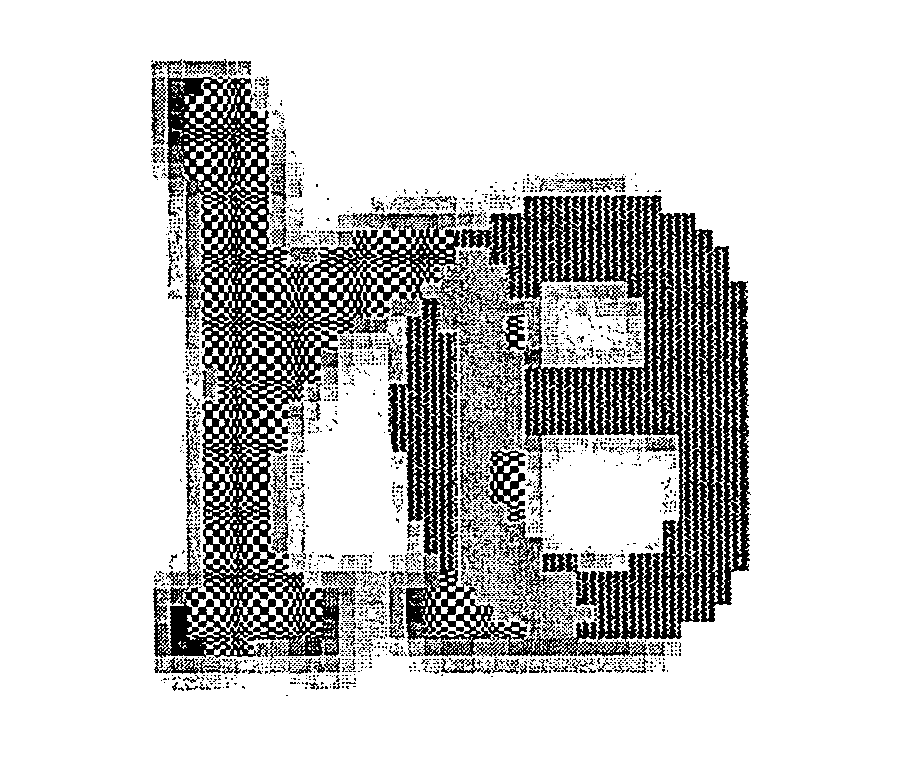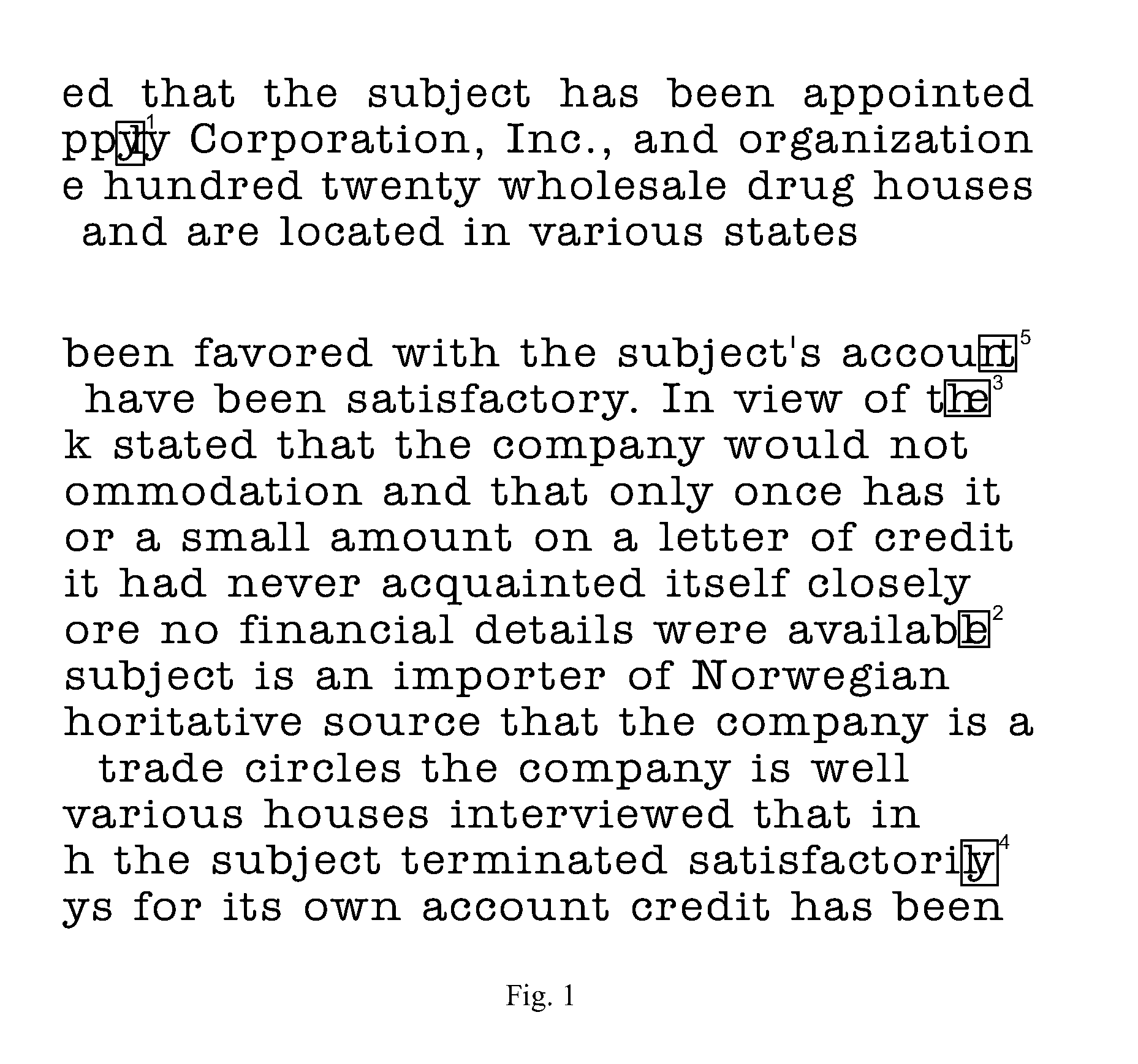Method for processing optical character recognition (OCR) output data, wherein the output data comprises double printed character images
- Summary
- Abstract
- Description
- Claims
- Application Information
AI Technical Summary
Benefits of technology
Problems solved by technology
Method used
Image
Examples
Embodiment Construction
[0016]FIG. 1 illustrates how double printed characters may be encountered in a text printed by a typewriter. In an example used in this disclosure, the double printed image of h and e is used to illustrate the identification process according to the present invention. A set of template images is created as depicted in FIG. 2 comprising images of characters recognized by the OCR system having an image quality above a certain level, for example, having a score value above a predefined level. These template images are then used one at a time in a comparison process with a bounded image of the suspected double printed image, for example the h and e as illustrated in FIG. 3. The bounding box is provided around the imprint of the suspected double printed character from the position on the page where this suspected double printed image has been identified. Each respective template image is moved as a gliding image over the image in the bounding box in FIG. 3. The movement can for example b...
PUM
 Login to View More
Login to View More Abstract
Description
Claims
Application Information
 Login to View More
Login to View More - R&D
- Intellectual Property
- Life Sciences
- Materials
- Tech Scout
- Unparalleled Data Quality
- Higher Quality Content
- 60% Fewer Hallucinations
Browse by: Latest US Patents, China's latest patents, Technical Efficacy Thesaurus, Application Domain, Technology Topic, Popular Technical Reports.
© 2025 PatSnap. All rights reserved.Legal|Privacy policy|Modern Slavery Act Transparency Statement|Sitemap|About US| Contact US: help@patsnap.com



